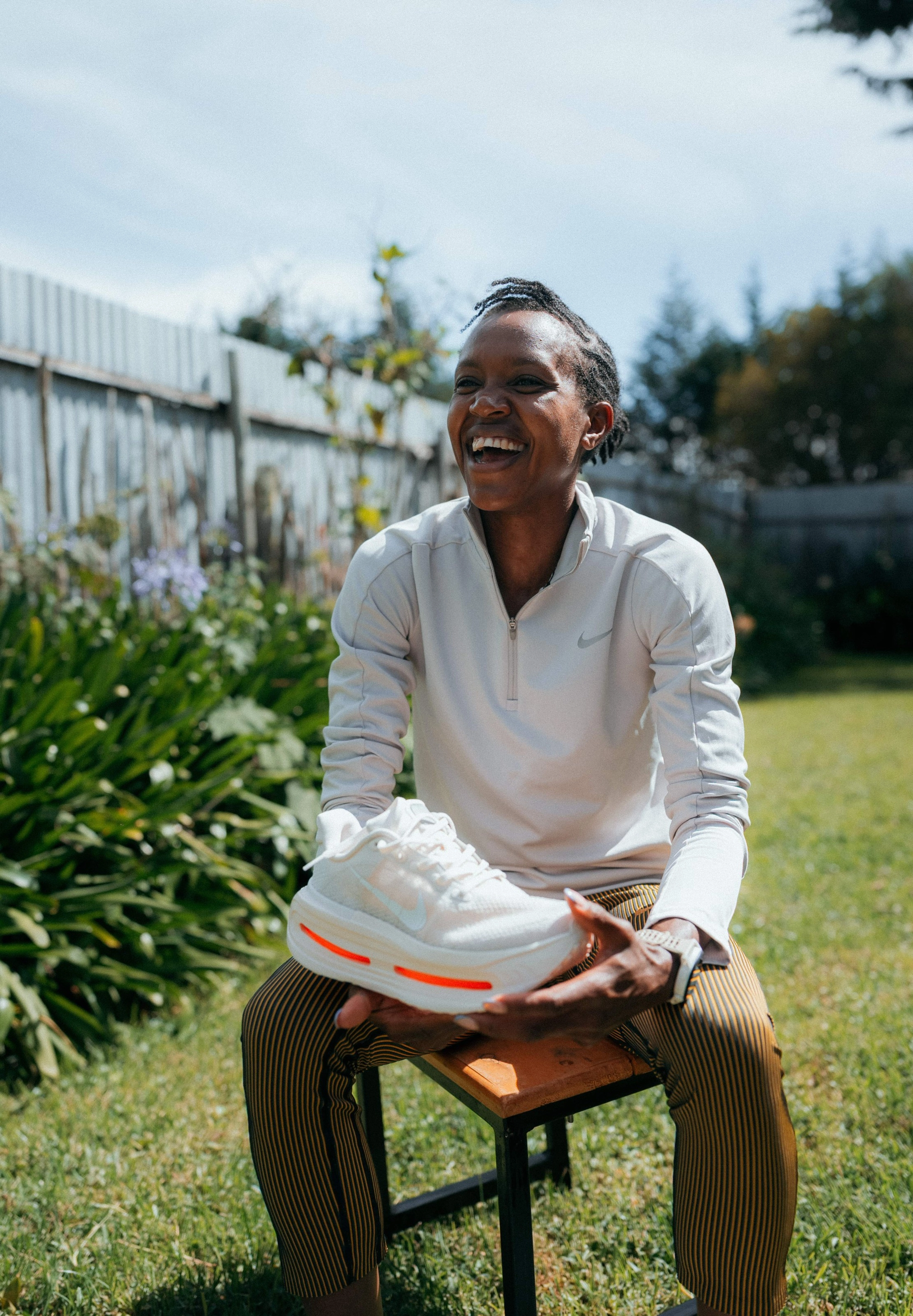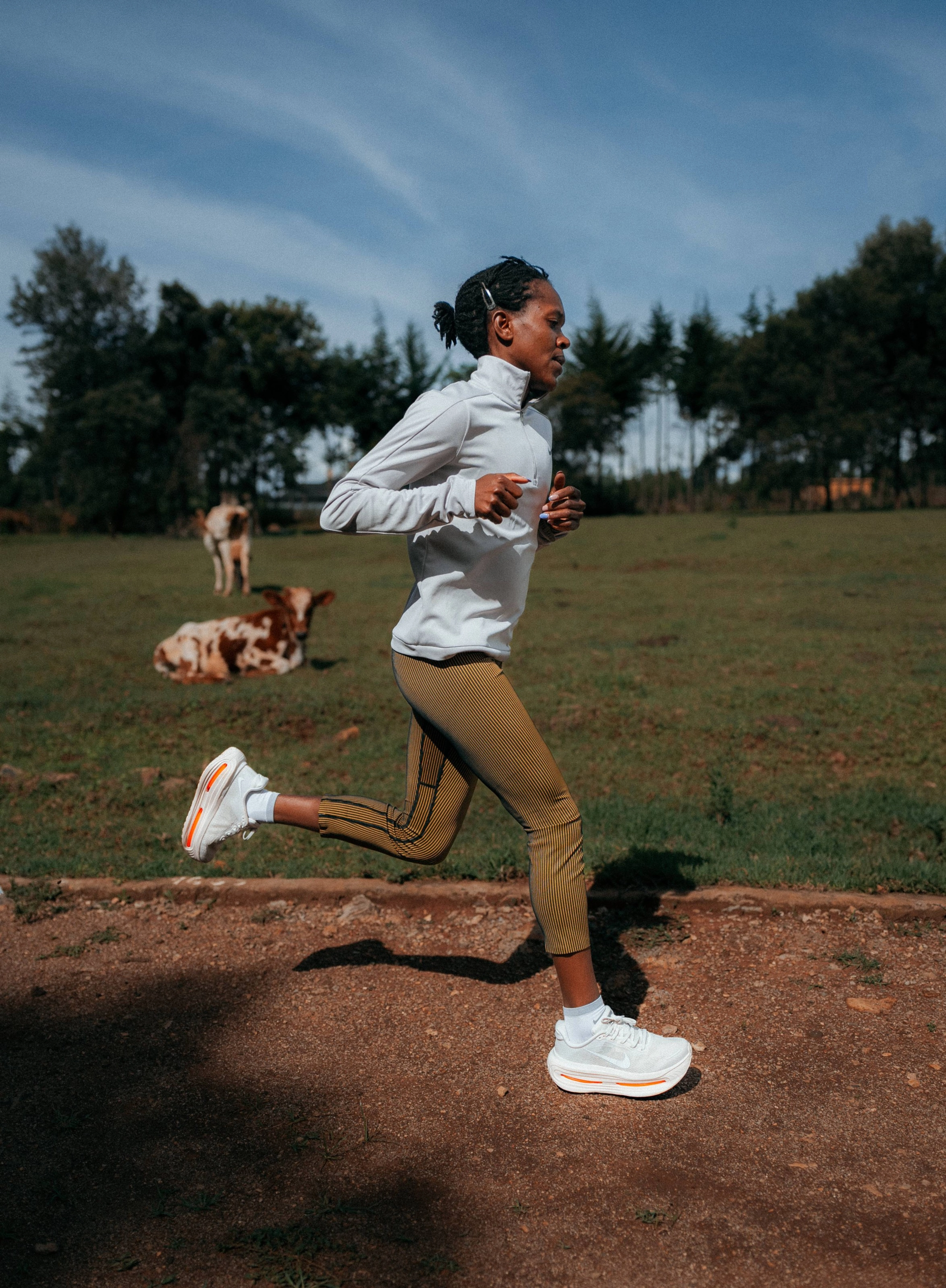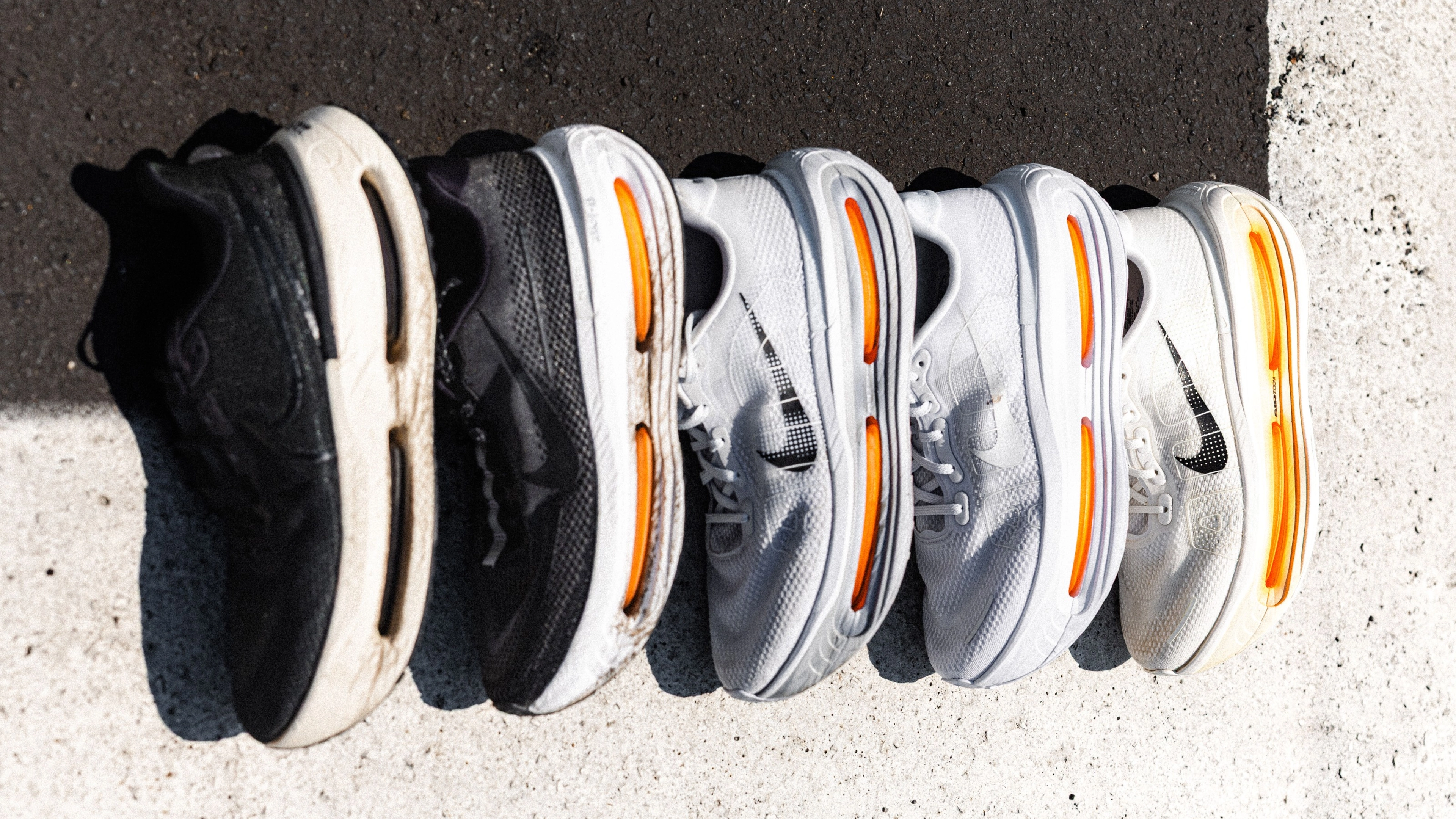
How We Partner With Athletes On New Prototypes
- October 07, 2025
All of Nike’s record-shattering, convention-breaking shoes began as prototypes. Many of them were disguised the same way: shrouded in black.
American marathoner Conner Mantz remembers when he received the first prototype of the Vomero Premium in December of 2023. The upper was blacked out. The Zoom Air units sandwiched in the midsole foam, the shoe’s most identifiable feature, were masked with tape.
Holding the prototype, he points to a light outline across the midsole. “You can still see the tape lines,” he says. “It was to keep people from seeing the Zoom Air units while I went on my long runs.”
This step in the prototyping process, called “blinding,” is one of many ways that Nike researchers and sport scientists set the table for testing new shoes with an athlete. Part of the goal is to keep the shoe undercover from the public for as long as possible. Scientists will hide standout attributes of the shoe, like its midsole profile or its upper, whenever it’s tested in a public setting. But shrouding the prototype in mystery is intended for the athlete, too. The goal when designing these test studies is to minimize any confounding factors that could affect how an athlete performs. That includes getting past any hesitations about how odd, distinct or flat-out wild a prototype might look. Researchers work hard to isolate an athlete’s physical response when they use a new piece of tech. They don’t want any quality of a shoe to prematurely influence an athlete’s feedback. Undistracted, the athlete can focus on the straightforward experience of wearing the shoe, getting a taste for how this mysterious new tool can give them a competitive edge.
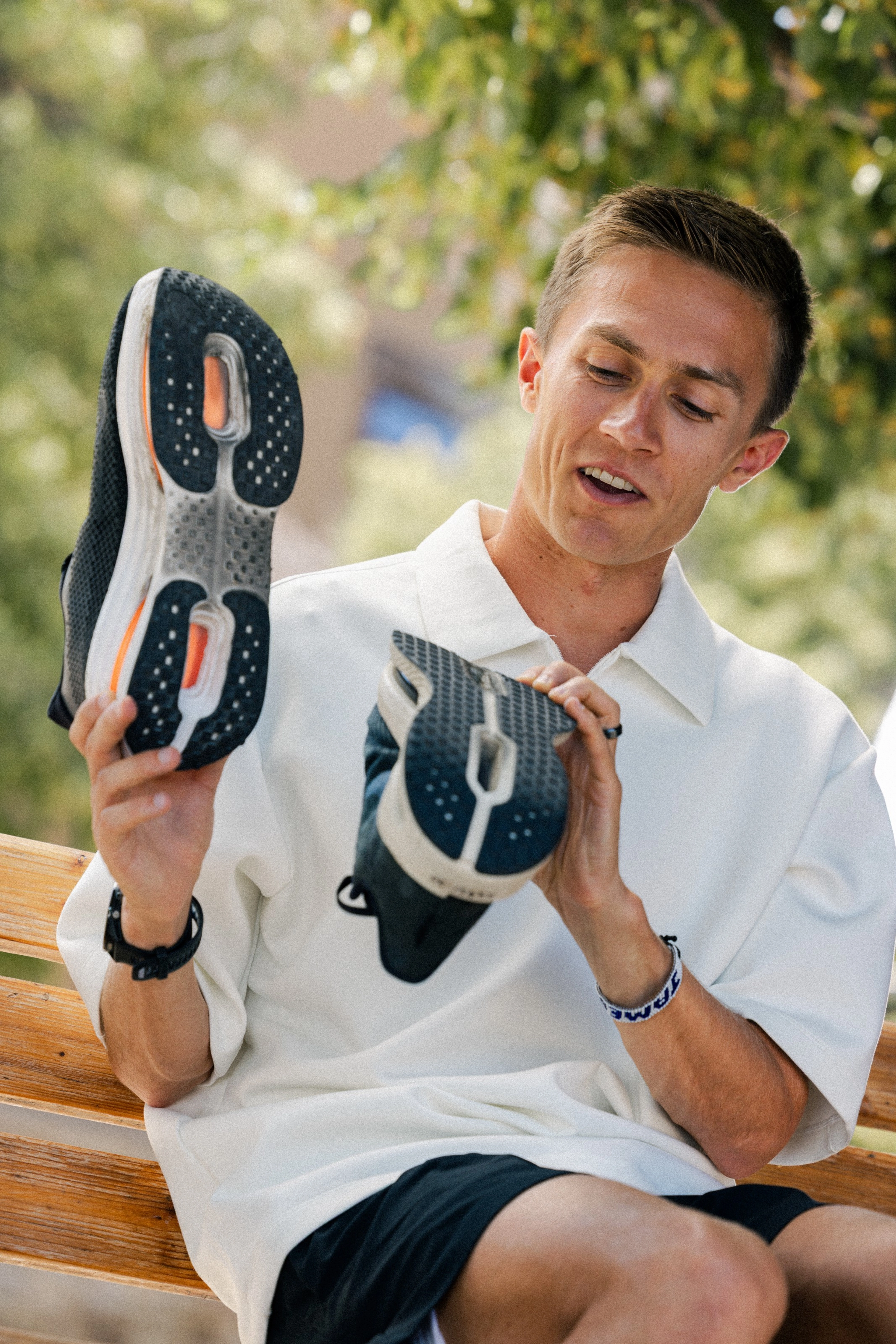
Out in the public, prototype training sessions take on the nature of undercover missions. "If I was on a road run, people would pull up to me at stoplights and ask what I was wearing," says Mantz.
Much like its final design, the Vomero Premium’s earliest prototypes drew plenty of knee-jerk reactions at first sight. It nearly falls into a different category of maximalist footwear altogether. To a degree, that's where it belongs. The Vomero Premium is ineligible for World Athletics competition thanks to its 55m stack height in the heel, a full bed of ZoomX foam, and two exposed Zoom units borrowed from Nike track spikes in the forefoot and the heel.
Mantz was in a deciding moment in his competitive season. He was battling a bone injury to his femur, but the 2024 U.S. Olympic marathon Trials were fast approaching, which would determine who traveled to Paris later that summer to compete for a medal. Training was painful at times. He couldn’t get in the mileage he needed. In his transition back to road running, he needed a bold solution to help build back his stamina. What he got was a bold, new prototype to test out. But the leap from a prototype’s presentation to its adoption is easier said than done.
“What I needed in my training shoe was something that could get my confidence back up,” says Mantz. “When my team showed me this new Nike prototype, it was unlike anything I’d seen before. It was a lot. You see this, and you think it’s going to be clunky to run in.”
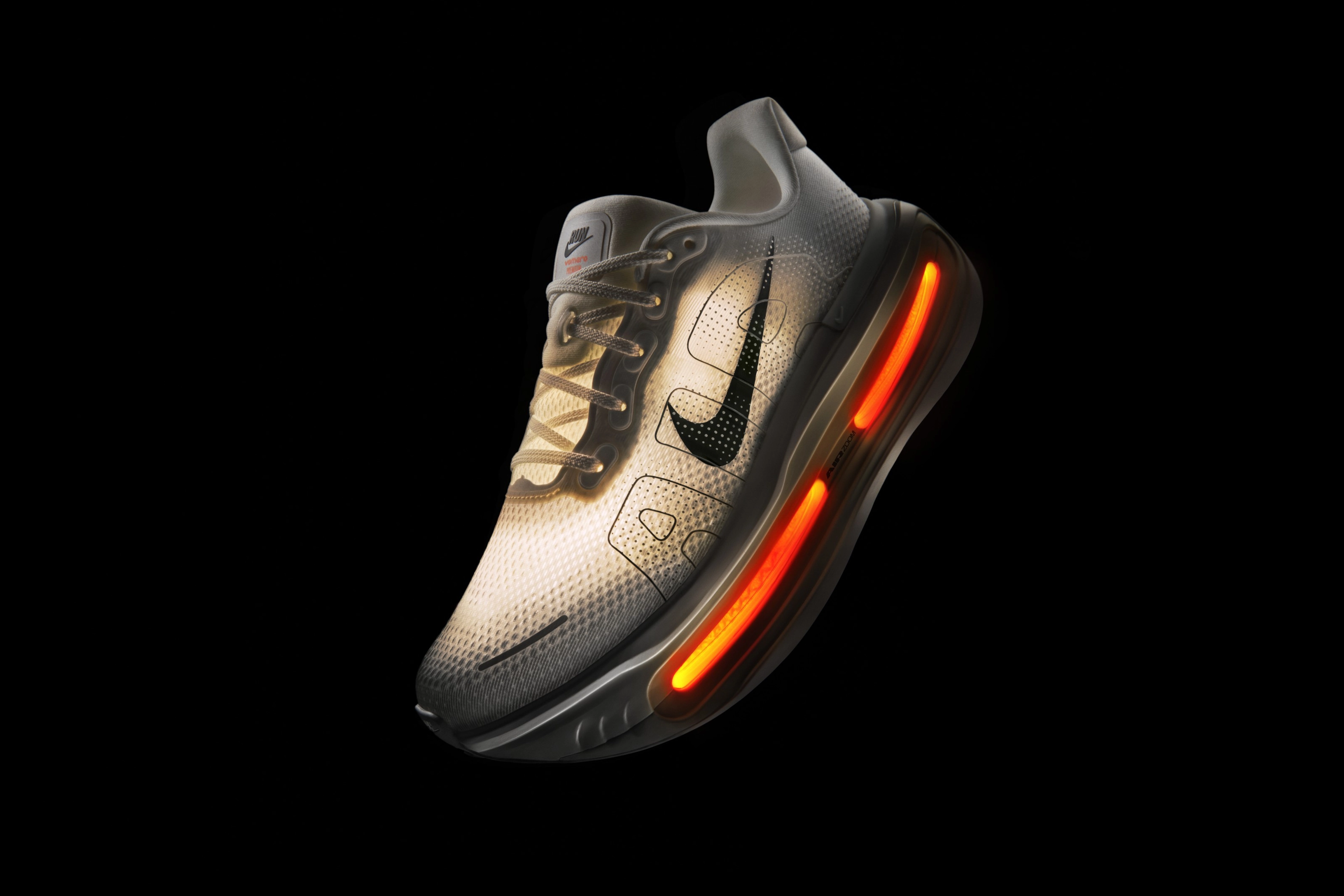
The Nike Vomero franchise goes big on cushioning. The Vomero Premium goes even bigger and more experimental, using specialized Zoom Air units pulled from the Nike Maxfly 2 and Victory 2 spikes.
Testing innovative prototypes with new cushioning systems like that of the Vomero Premium is a thorough process. It includes hours of exchanges between athletes, designers and scientists about which qualities of the shoe need to be turned up and which should be toned down. Just as important in the process, though, is another tall task: to channel positive belief in a product that might look and feel different from what an athlete is used to wearing.
Sometimes a prototype must fight against historical preconceptions if it contains technology that was never thought to “belong” in a particular sport. Take the Nike Maxfly sprint spike. Introduced in Tokyo in 2021, the spike was the first to bring Air Zoom to the 100 meters. Seeing the pronounced Air unit in the forefoot was unusual, particularly for an event that suggests a less-is-more approach for footwear. Weren’t simpler, more minimal spikes better? Fast forward to Tokyo’s conclusion, and athletes wore the Maxfly and medaled in both the men and women’s 100 meters — and the 200-meter, the 400-meter, the 800-meter and the relay events. A clear premise, to dial in the plated airbag design for sprint biomechanical loads, was achieved both through adoption and through race performances.
How do you convince athletes that, while what they’re currently wearing may work, this prototype they’re holding in their hands has the makings of something special?
“Our main focus is trust,” says Tobie Hatfield, Nike Senior Director, Athlete* Innovation. “If athletes don’t know that you’re looking out for them as individuals, they’ll never trust the product you make for them. Everything we do has to be built on earning their trust.”
Encouraging an athlete to adopt a new shoe depends on stoking that trust — emotionally, psychologically and, in the case of a shoe, biomechanically.
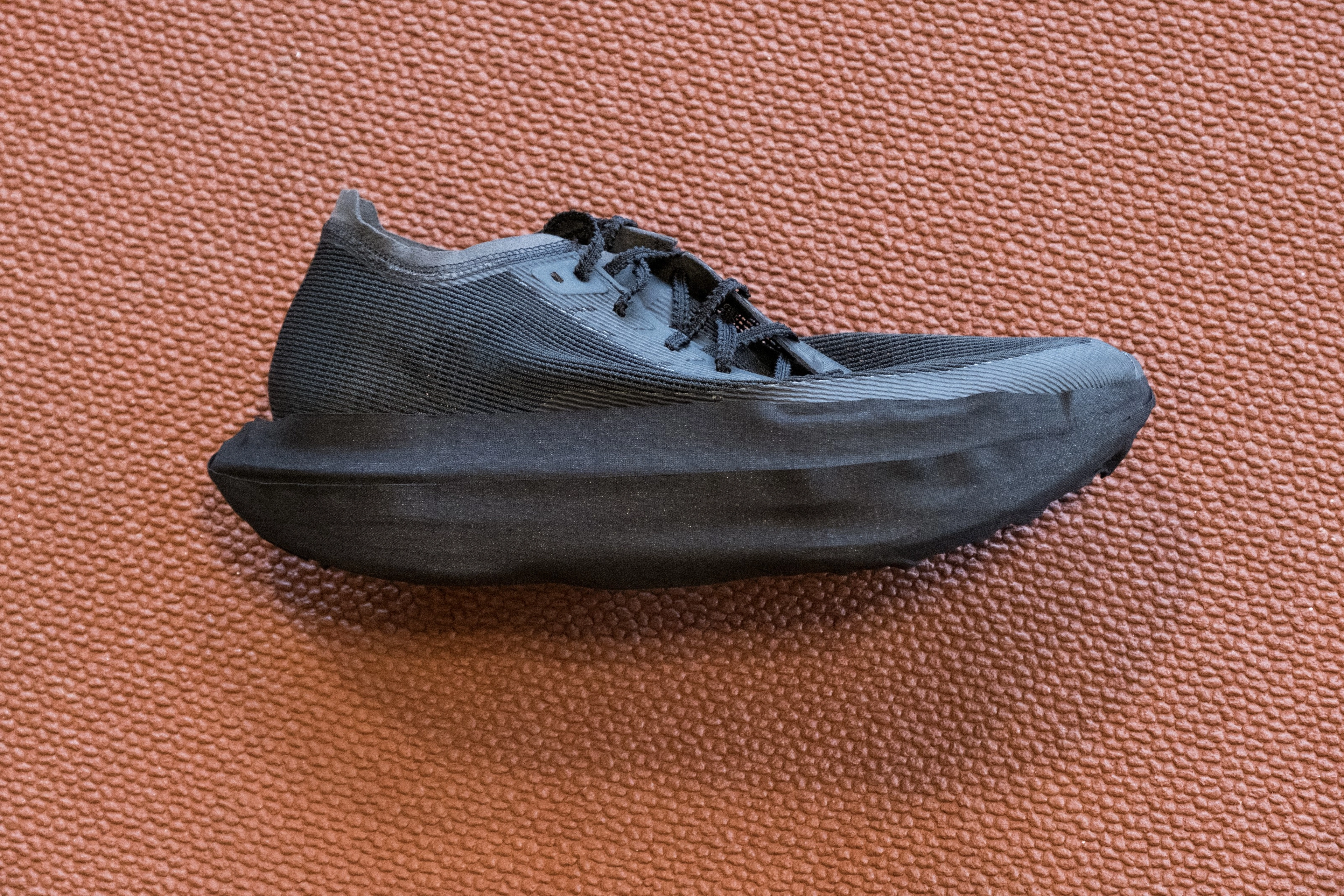
Many of Nike's pioneering shoes began as inconspicuous test vehicles. Here, an early prototype of the first Alphafly is shrouded in black and masked in order to hide the exposed Zoom units.
Trace all shoes back to their first prototypes, and you’ll find that most designs are intentionally made as visually subdued versions of the final silhouette. This allows for controlled research; the more basic a shoe looks, the less likely an athlete will form a biased opinion about it. Emily Farina, Sr. Principal, Running Footwear Research in the NSRL, recalls the earliest testing of the Vaporfly 4% prototype in the mid 2010s. She says the shoe’s initial field research went relatively unnoticed, thanks in large part to the anonymous-looking prototype. The early design would be the starting point for the groundbreaking Vaporfly 4% Elite worn by Eliud Kipchoge in Breaking 2.
“If you saw the early prototype in 2015, it was hard to really know what you were looking at,” says Farina, referring to its stack height and rocker shape, two outlying qualities which have become standard for that new era of cushioned running shoes. “Validation relied on what you felt and how you performed, not what you could see. Nike brought the prototype to Eliud's running camp in Kenya. A lot of the runners had trouble understanding how the design could make them faster. That is, until they took the shoes for a tempo run, looked down at their watches, and realized they’d cut their pace by 30 seconds or more while exerting the same effort.”
”Validation relied on what you felt and how you performed, not what you could see.”
Emily Farina, Sr. Principal, NSRL
The stopwatch is one of the simplest signs of biomechanical efficiency. Are you able to run faster for the same effort? If the answer is yes, persuading an athlete to continue testing a new prototype becomes a lot simpler, no matter how extreme it looks. Oftentimes the athlete comes to this realization of their improved performance in a kind of epiphany, like in the scene Farina describes, when a runner is able to accomplish something they weren't expecting and feel great while doing it. For Conner Mantz, his came during a long run in Utah, where he laced up the Vomero Premium prototype for a 22-miler with his training partners, still building up his base fitness due to the injury. He ran four of those miles at a snappy 4:30 pace. Mantz was shocked by how good he felt.
“That’s when I started thinking to myself, maybe there’s something special here,” says Mantz, laughing how the prototype’s stealthy design drove his teammates nuts. “They’d ask me to just tell them what this new shoe was. I’d tell them, ‘Don’t worry about it.’”
Other athletes need more information to trust a prototype. That’s why Nike scientists test athlete responses to a range of stimuli, dubbed “signals.” In footwear research, signals are different ways to evaluate a shoe’s effect on performance.
When world champion Faith Kipyegon visited the NSRL in September of 2024, she underwent a number of tests that gave Nike scientists a quantitative launching pad for how to serve Faith in preparation for her four-minute mile attempt the following year. She underwent a VO2 Max test to explore her personal capacity. Another signal that's typical of NSRL visits from elite runners is a submax VO2 test, in which the athlete runs on a treadmill and swaps in different shoes while they are hooked up to an oxygen mask. The test results measure the body’s use of oxygen to perform a task. Here, in comparing one shoe to another, proof of improved performance comes through improved physiological stats.
Breaking the Mold for Breaking4
New doesn’t always mean perfect. In the case of Faith’s attempt, designers listened to every bit of her critical feedback to get her Victory Elite FK prototype just right, like expanding the width in the forefoot or adding spikes for better traction at toe-off. Mantz’ review of the Vomero Premium prototypes were just as honest. The first prototype needed a more supportive upper, he told Nike designers and developers. After a few weeks, he had an updated version on his feet, though the second prototype felt less like a recovery shoe and more like a speedy, Alphafly-esuqe shoe. He relayed his feedback to the design teams. Another one of the updated versions had almost gone too extreme on the cushioning. It was too soft, said Mantz. The teams adjusted the midsole to find a happy medium between too soft and too race-y.
"Conner would always give us straight, honest feedback, which is vital to our process," says Rachel Nichols, Lead Developer, Nike Running. The feedback loop encompassed a variety of teammates across product design, working together to address Mantz' detailed review of each prototype.
On and on the dialogue went, up to a fifth version of the prototype, and this one was…just right. He was back to logging 120+ mile training weeks, and what’s more, he was feeling confident again, equipped with a training shoe that was working with his body through the high volume.
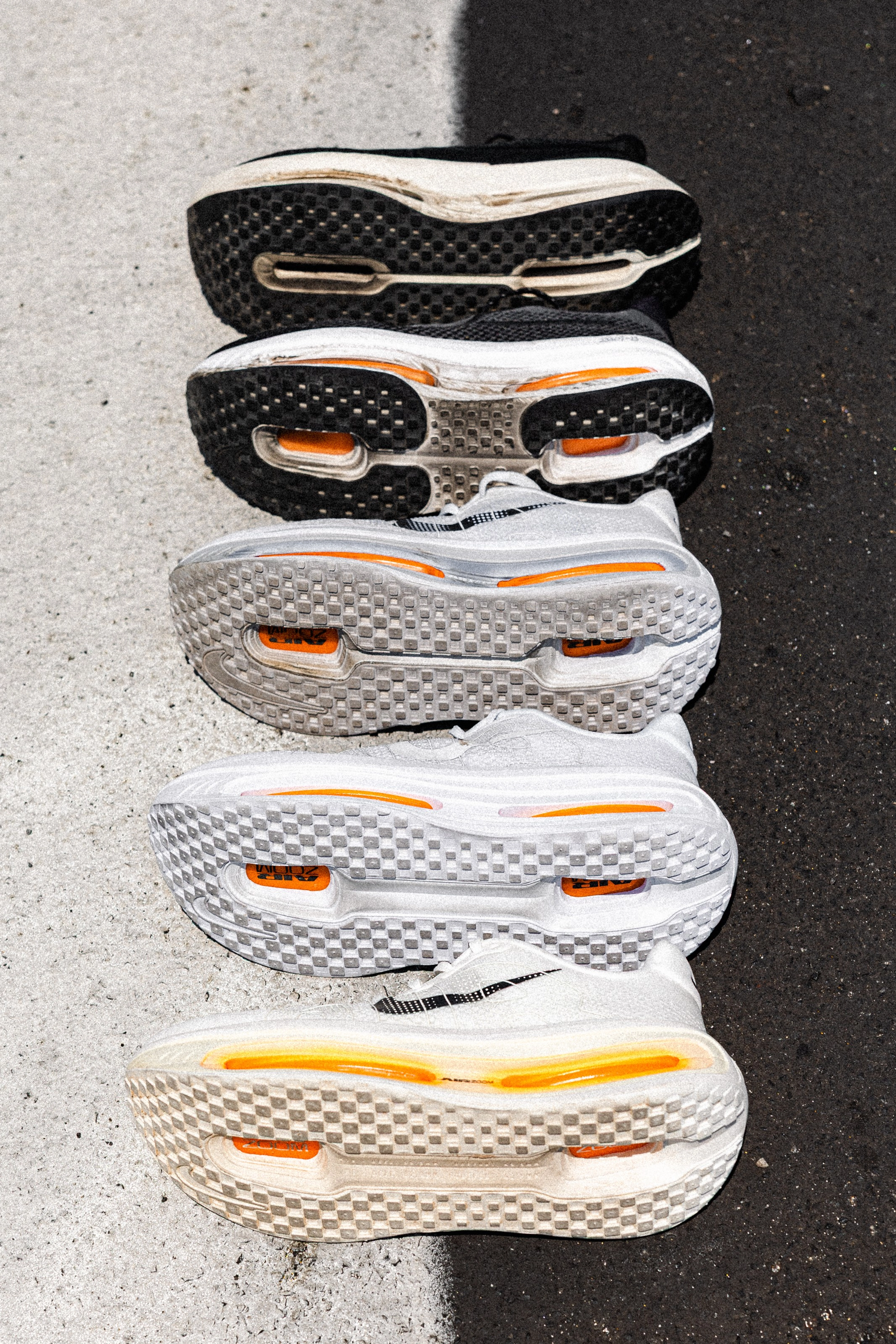
A look at the outsole progression of the early Vomero Premium prototypes. Among other updates, later versions of the shoe featured a deeper tread pattern and a wider base for stability.
You know where the story goes from here. Mantz would go on to win the 2024 US Olympic Trials, where he secured his spot for Paris, finishing eighth. Now, Mantz is using every tool in his arsenal, including the Vomero Premium, to chase a new personal milestone at the 2025 Chicago marathon: the American record of 2:05:38.
“The Vomero Premium became this incredibly important shoe in my career. Training in the shoe helped me feel like myself again,” says Mantz. “I’m really excited for people to be able to experience it. Going through the process of testing those early prototypes, helping make the final shoe as good as it can be, meant a lot to me.”
"A shoe should start by considering a problem that needs a solution. Listening to athletes gets to the heart of their needs, and that’s where trust is formed."
Tobie Hatfield, Sr. Director, Athlete* Innovation
Unflinching athlete feedback makes all products better. If a prototype has any chance to take off, incomplete versions need to be dismantled and built back up. Trust with athletes is formed not just through the successes, says Hatfield. It's formed through the failures, requiring the willingness to acknowledge when a product fell short. Shoes are never tested in a technological vacuum. Spreadsheets of positive data, oxygen masks and shrouded midsoles are all part of the magic. But trust in a new prototype begins and ends with the ordinary, relational act of listening to what athletes need.
“We never want a shoe to be disguised as a solution that was looking for a problem,” says Hatfield. “That’s backwards. A shoe should start by considering a problem that needs a solution. Listening to athletes gets to the heart of their needs, and that’s where trust is formed."
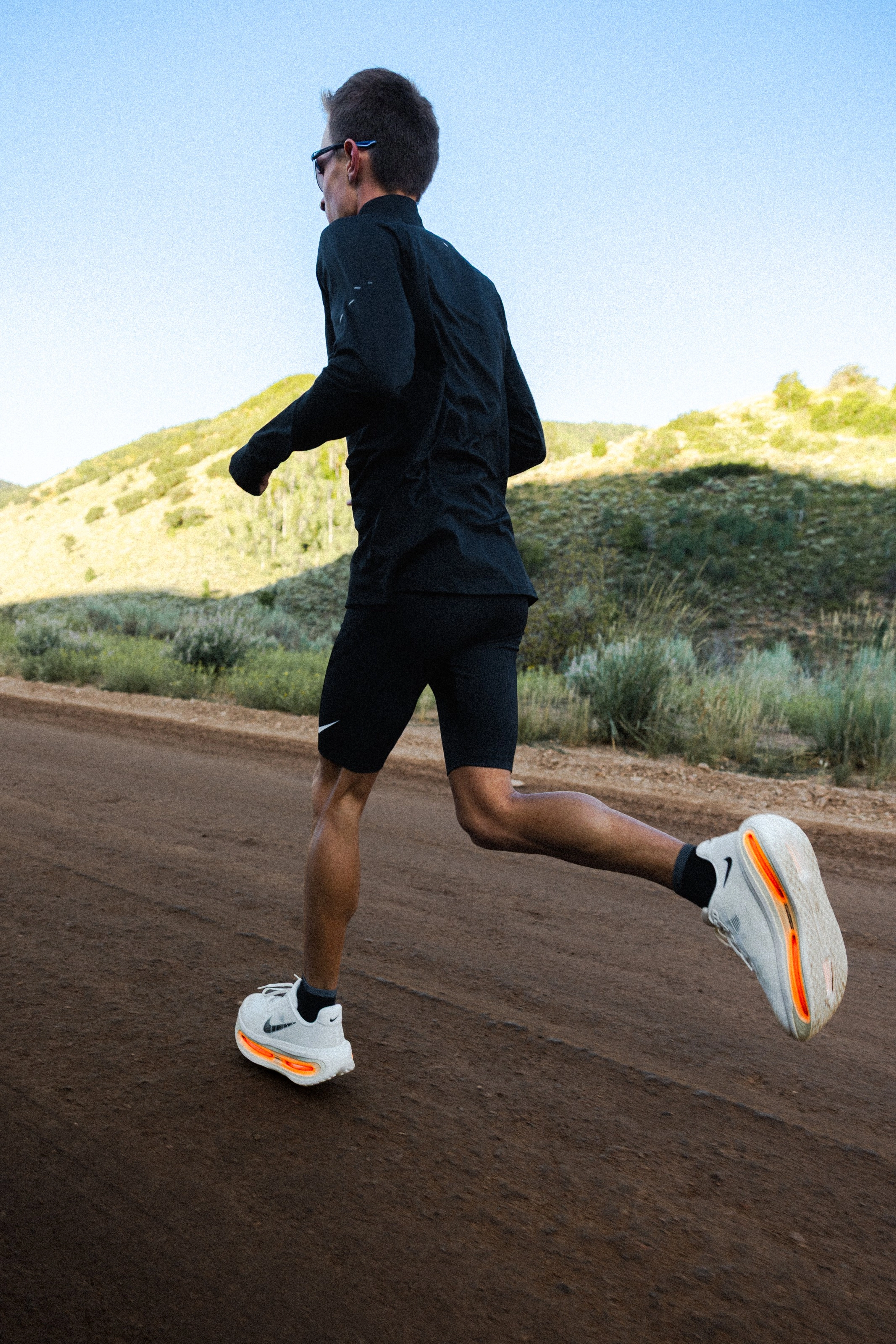
A special colorway of the Vomero Premium, inspired by the early prototypes, released on October 2. "As an athlete, it meant a lot to me that my feedback on the shoe was implemented," says Mantz.
